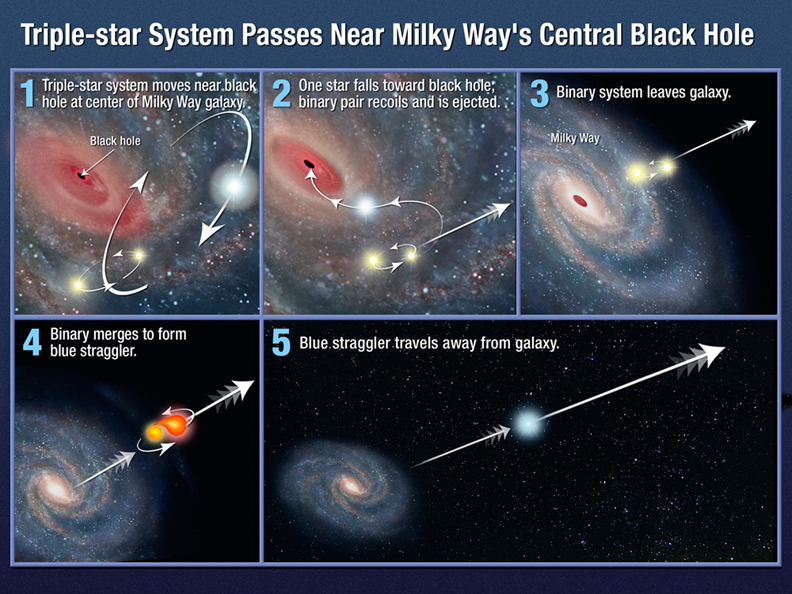Image List
-

In this illustration, the hot, blue star HE 0437-5439 has been tossed out of the center of our Milky Way galaxy with enough speed to escape the galaxy's gravitational clutches. The stellar outcast is rocketing through the Milky Way's distant outskirts at 1.6 million miles an hour, high above the galaxy's disk, about 200,000 light-years from the center. The star is destined to roam intergalactic space.
NASA, ESA, and G. Bacon (STScI) Science Credit: NASA, ESA, O. Gnedin (Univ. of Michigan), and W. Brown (CfA) -

This illustration shows one possible mechanism for how the star HE 0437-5439 acquired enough energy to be ejected from our Milky Way galaxy. In this scenario, a triple-star system, consisting of a close binary system and another outer member bound to the group, is orbiting near the galaxy's monster black hole. One star is captured by the black hole and the tightly bound pair gets ejected from the galaxy. As the duo speeds through the galaxy, one member evolves more quickly and consumes the other. The resulting rejuvenated star, massive and very blue, is called a blue straggler.
NASA, ESA, and A. Feild (STScI) Science Credit: NASA, ESA, O. Gnedin (Univ. of Michigan), and W. Brown (CfA) -

This NASA Hubble Space Telescope image shows the hypervelocity star that was kicked out of the center of our Milky Way galaxy with enough energy to escape the galaxy's gravitational grip. Dubbed HE 0437-5439, the stellar speedster may have been a member of a triple-star system and was jettisoned from the galaxy by the monster central black hole. Hubble's Advanced Camera for Surveys made this observation on July 8, 2006, in near-infrared light.
NASA, ESA, O. Gnedin (Univ. of Michigan), and W. Brown (CfA)